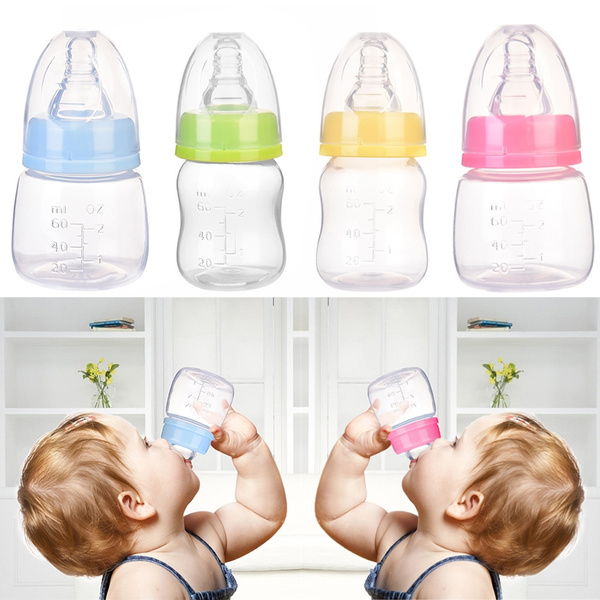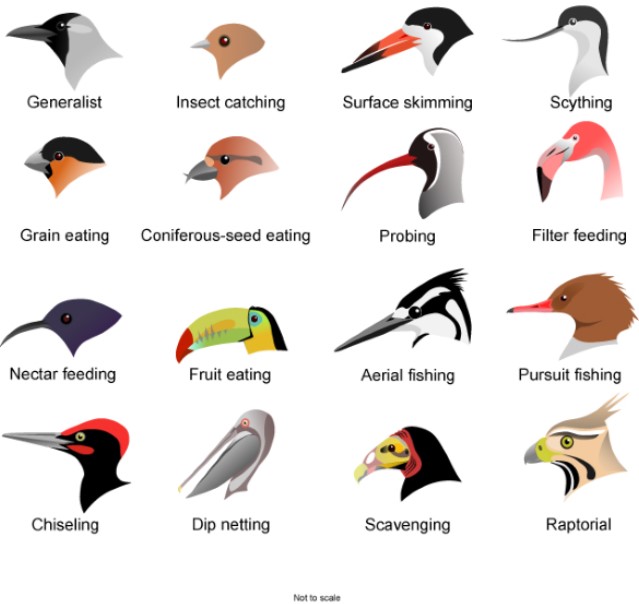Baby cries when burping during feed
Burping Baby – Baby Care Advice
Caring for a baby involves a steep learning curve. You will have many questions. Some relate to burping. How is it done? How long should you try? What if he doesn’t burp? Until what age do you need to continue? Find answers to your questions and more.
How to burp a babyYour baby may feel a little uncomfortable if she swallows a lot of air during feeding. Burping can help her to expel some of the air that she swallows. There are a number of different ways you can assist your baby to burp.
With all burping methods you aim is to...
- Hold your baby in a upright or semi-upright position; and
- At the same time apply gentle pressure to her tummy.
Babies often bring up a little milk with a burp, so it may be helpful to have a burping cloth, cloth diaper or towel handy. If your baby often spits up large amounts of milk, we recommend burping method A described in 1 & 2 below, which will keep her in an upright position but apply less pressure to her tummy.
1. Over your shoulder
A) Hold your baby in an upright position against your chest, with her head resting on your shoulder. Gently pat and/or rub her back using a circular or up and down motion, with the heel of your free hand; or
B) Lay her over your shoulder. This allows you to position her so that your shoulder provides gentle pressure against her tummy. Hold her securely with one hand and pat or rub her back with the other.
2. On your knee
A) Sit your baby sideways on your knee. Support her head by placing your thumb and index finger under her jaw just below her ears. (Take care your hand is not pressing against her neck). Lean her forward slightly, resting her tummy against the heel of your hand. Gently pat and/or rub her back with your free hand; or
B) A slightly different method in this position would be to maintain your hold at her front (as described above) but at the same time support her back and neck with your other hand i.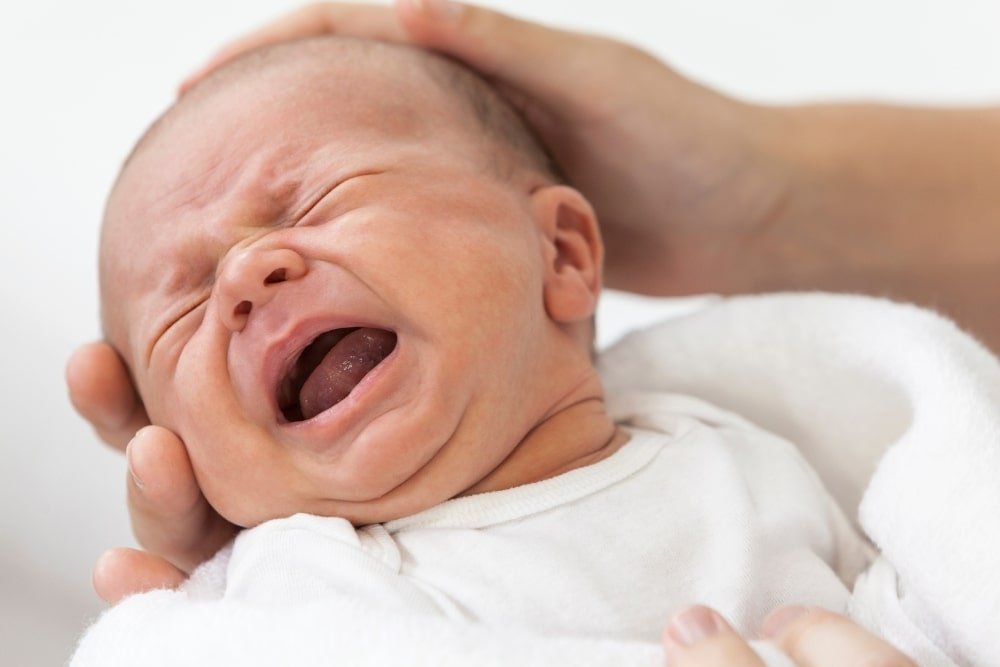 e. she's safely supported between your two hands. Then gently rock her back and forward or rock her in a large circular motion, moving her entire upper body from her hips.
e. she's safely supported between your two hands. Then gently rock her back and forward or rock her in a large circular motion, moving her entire upper body from her hips.
3. Over your knee
Lay your baby face down over your crossed legs. Position her so that your upper leg provides gentle pressure to her tummy. Support her head with one hand and pat or rub her back with your other.
4. On your arm
Lay your baby face down along your forearm, with her head near your elbow and her arms hanging down either side of your arm. Your hand (of the arm she's laying on) supporting her diaper area. Her side is resting against your body. Once you feel you have a safe and secure hold of her, gently pat and/or rub her back with your free hand. (This method is only suitable for small babies.)
FAQ's1. How can I tell if my baby needs to burp?
Your baby may stop feeding, squirm, fidget or fuss during or after feeding if she needs to burp.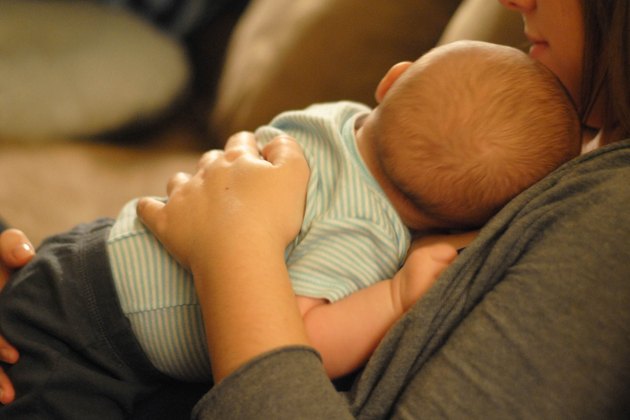 Contrary to popular belief babies generally do not cry because they need to burp (but they do cry for many other reasons). Swallowed air in a baby's tummy may provide a sensation of fullness, but it does not cause pain.
Contrary to popular belief babies generally do not cry because they need to burp (but they do cry for many other reasons). Swallowed air in a baby's tummy may provide a sensation of fullness, but it does not cause pain.
Babies cry for many reasons, most of which have nothing to do with physical discomfort (see crying baby). A newborn baby will automatically draw up her legs when she becomes distressed for any reason and this is not a clear sign of tummy pain.
2. Is it necessary to burp my baby?
This depends on your individual baby. Some babies swallow more air during feeding than others, so they may need burping more often. Bottle fed babies tend to swallow more air than breastfed babies. It is not always necessary to burp a breastfed baby, but his would depend on your individual baby. Bottle fed babies generally need burping. As a guide, try to burp your bottle fed baby mid way and at the end of her feed.
If your baby is swallowing a lot of air during feeding the reason may be that she's not latching-on to your breast deeply enough (see Breastfeeding basics for more on latch-on) or the bottle feeding nipple may not be suitable (see Feeding equipment for tips on choosing a feeding nipple) and/or she may be feeding too quickly (see How long should bottle feeding take?)
3.
 How long should I burp my baby for?
How long should I burp my baby for?There is no set time frame to burp a baby and no set number of burps. Every baby is different. How long you would continue to try to burp your baby would depend on your baby's individual circumstances.
Parents generally spend too much time burping their baby rather than too little time. This may result in your baby being kept awake longer than she should, and in doing so increases the risk of her becoming over-tired. It can then become very difficult to tell if she is then crying because of gas (wind) or tiredness.
Your newborn baby will be ready for sleep very soon after feeding. It's important that you do not spend too long trying to burp her.
4. What if my baby doesn't burp?
It can be very difficult to get a 'sleepy baby' to burp! After feeding, if your baby is content but does not burp within 5 minutes of trying, there's no need to continue. She won't burp every time!
Some babies will cry if you stop during feeding to try to burp them because they want to continue feeding.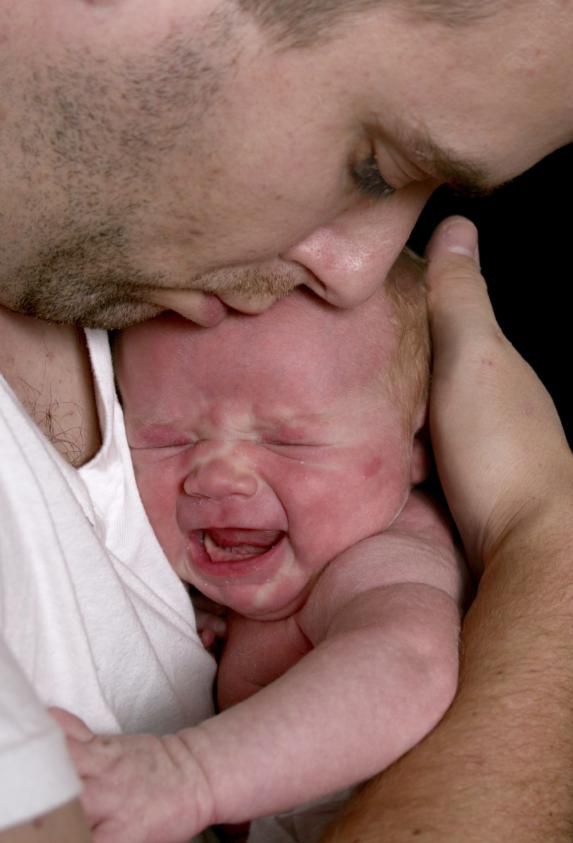 If your baby is crying but does not burp within 1 or 2 minutes return to feeding.
If your baby is crying but does not burp within 1 or 2 minutes return to feeding.
5. If my baby doesn't burp will this cause any problems?
RARELY! Swallowed air may provide a feeling of fullness, which may mean your baby won't drink as much milk as she would otherwise, but the only downside to this is she will demand her next feed sooner. Sometimes a little or a lot of milk can come up with a burp. This is normal. (See gastro-esophageal reflux if your baby often spits up when she's not burping.)
Swallowing some air during feeding is unavoidable , so it's important to not 'stress out' over it. In most situations, swallowed air will cause your baby no discomfort whatsoever. The swallowed air will either be absorbed by her body or pass right through.
A baby's distress is commonly blamed on "trapped air, which causes colic". Swallowed air is not a reason for colic. Because distressed babies often swallow additional air as they cry, they frequently bring up a bubble or two after crying for long periods.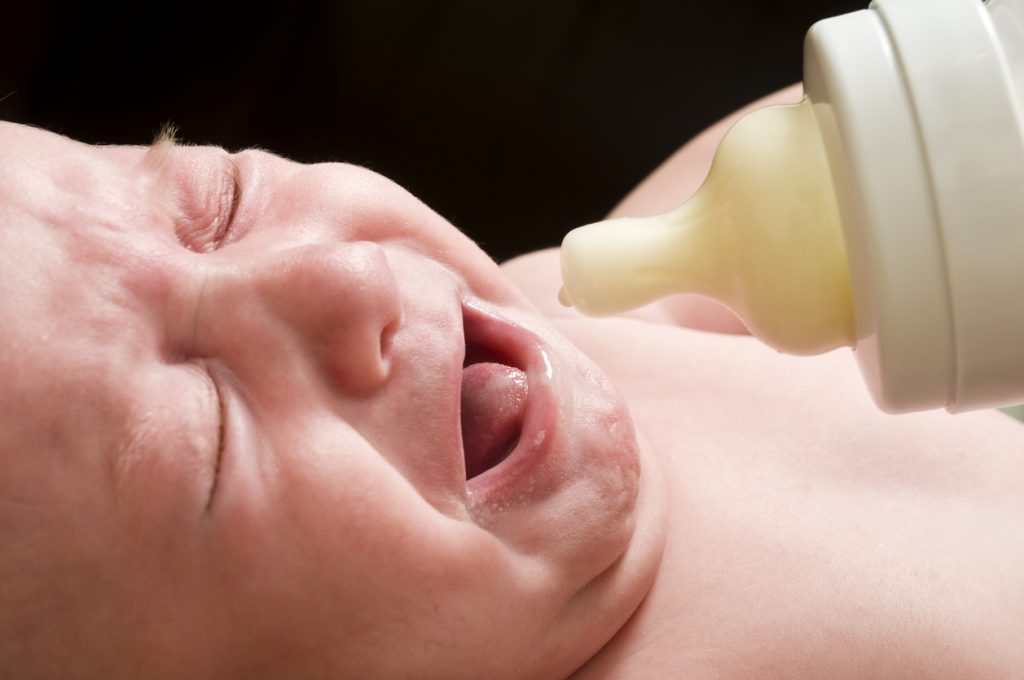 This can be confusing for parents because it is easily mistaken as the reason for crying, when in reality it was simply a side effect of crying.
This can be confusing for parents because it is easily mistaken as the reason for crying, when in reality it was simply a side effect of crying.
A small number of babies may experience discomfort from excessive gas hat is produced in their intestines, which is commonly coupled with frequent watery bowel movements. However, these symptoms which can be related to a number of different reasons such as: an immature digestive system; a digestive disorder; an inappropriate diet; or over-feeding, are not due to swallowed air. (See Infant gas for more information.)
6. Do colic/wind mixture help?
NOT MUCH! The side effects of colic/wind mixtures or medications may potentially create greater problems than the gas (wind) itself. Studies have shown that a small amount of sugar water is just as effective as may colic/wind mixtures in helping a baby to burp.
If you decide to use a colic/wind medication, it's important to avoid mixtures that contain a sedative or alcohol. These can appear to relieve your baby's gas, but in reality they do little more than sedate her. (If you are not sure what's in a colic/wind mixture or medication, ask your doctor or pharmacist.)
These can appear to relieve your baby's gas, but in reality they do little more than sedate her. (If you are not sure what's in a colic/wind mixture or medication, ask your doctor or pharmacist.)
Far more effective than using mixtures or medications is to reduce the amount of air your baby swallows in the first place by ensuring a deep latch-on when breastfeeding (see Breastfeeding basics) or using a suitable feeding nipple and making sure your baby does not feed too quickly (see our section on bottle feeding).
Written by Rowena Bennett
© Copyright www.babycareadvice.com 2020. All rights reserved. Permission from author must be obtained to reproduce all or any part of this article.
Why Does My Baby Scream When Being Burped?
Before you become a parent, it’s hard to imagine the amount of thought and work you’ll spend burping your baby.
Then, once it’s finally born, you start wondering whether you should burp your newborn as it’s laid down or held straight.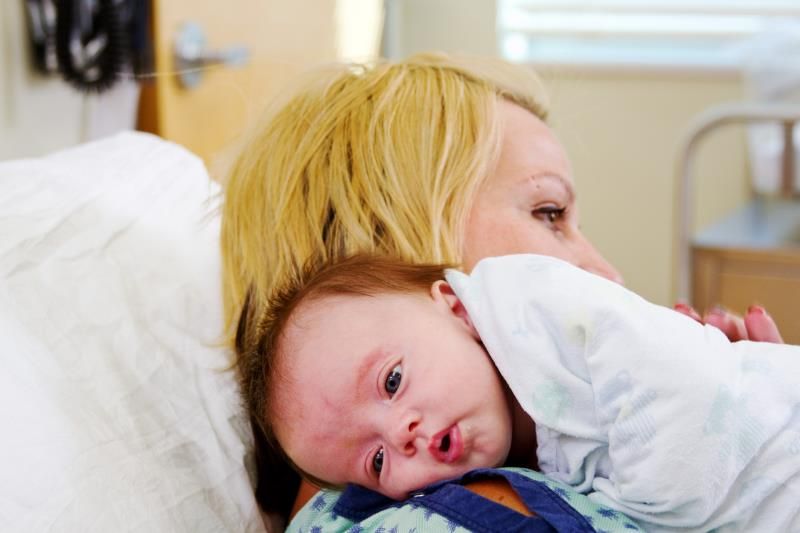
If you’re reading this post, you’re more so concerned about why your baby cries and screams when being burped. Do not be alarmed; your baby is fine!
In this post, we cover everything you need to know about baby burping, from why it has to be done to why some babies tend to scream when being burped, so stick around.
Why Should You Burp Your Baby?
As your baby feeds, be it breastfeeding or bottle-feeding, they swallow air unintentionally. This air can cause colic, bloating, gas, abdominal pain, or even exacerbate acid reflux.
You might be thinking that your baby hates being burped because of all the screaming, but it’s not true.
Your little bundle of joy screams when being burped because of the discomfort it’s feeling from swallowing air, not from your gentle patting.
Burping helps expel the excess air in their upper digestive tract, relieving your baby’s distress.
How to Keep Your Baby From Screaming When Being Burped?
We recommend stopping mid-feed to burp your baby.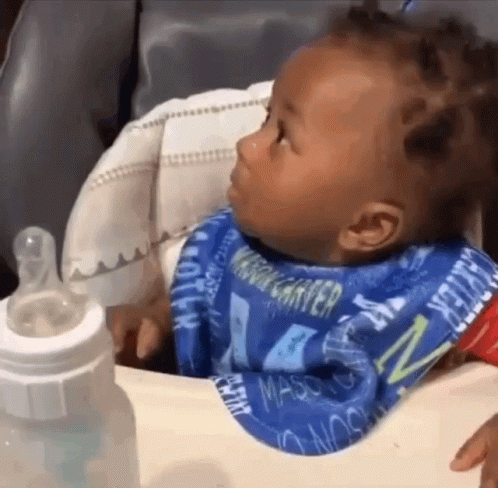 If you wait until your baby is full, releasing all the trapped air at once could be a source of discomfort.
If you wait until your baby is full, releasing all the trapped air at once could be a source of discomfort.
Note, however, that can sometimes be counterproductive. When you stop mid-feed, your baby might start screaming and crying because it’s still hungry and wants the feeding to continue. In this case, you should just let them finish.
The thing is, when babies cry and scream, it causes pressure to build up inside their abdomen because it makes them swallow more air. So, how can you decrease the air intake? Read on.
How to Decrease Air Intake?
The speed of feeding can result in more air intake. Try to feed your baby before they throw a fit from hunger. A slow feed will help reduce air swallows.
Also, if you’re going through a forceful let-down, you might want to lay down so that your milk slows down with the force of gravity. Moreover, make sure your baby’s hold on your breast is steady and sealed.
Bottlefeeding can be a tad more challenging, resulting in more air bubbles.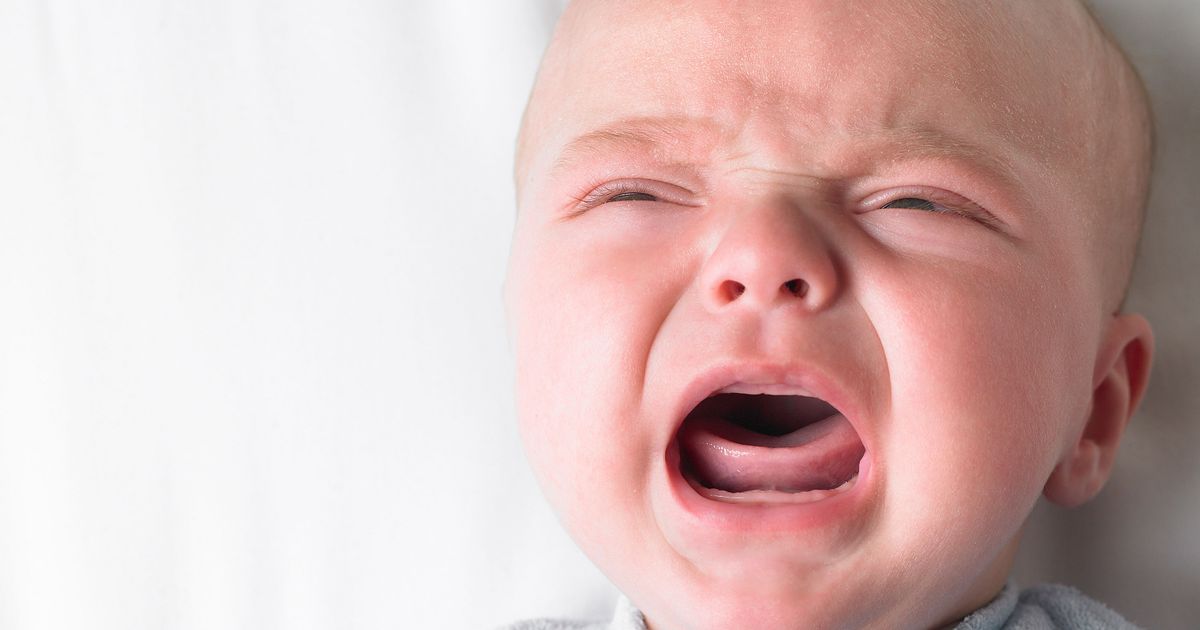 The trick is to always have the bottle teat full of milk, otherwise, your baby is sucking on air. Tilting the bottle to a good 30 or 40 degrees is always a good idea.
The trick is to always have the bottle teat full of milk, otherwise, your baby is sucking on air. Tilting the bottle to a good 30 or 40 degrees is always a good idea.
You will also find bottles with disposable liners very convenient. The collapsible liners resemble breasts, allowing for proper latching. They make it incredibly hard for air bubbles to go with the milk flow.
Lastly, make sure the nipple opening of the bottle isn’t too big or too small. That can make your baby suck harder, and swallow more air.
How to Burp a Baby That Is Hard to Burp?
Have you been at it, patting your baby for a while, yet your baby seems to be fighting the burp? If it’s just one of those days, here are some of the positions and tips that have been put to trial and kept us sane a time too many!
When patting your baby’s back doesn’t cut it, you might want to start rubbing it from top to bottom.
The gentle massaging or swinging can soothe your baby and help them let go of the uneasiness.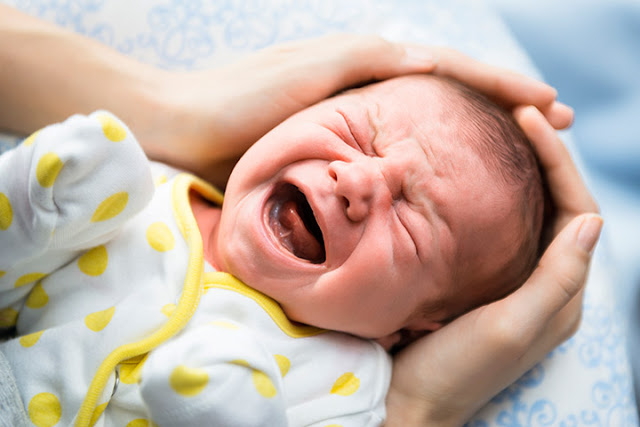 It’s also a good way to avoid baby screams when being burped.
It’s also a good way to avoid baby screams when being burped.
If that doesn’t work, go for some patting, with a little pressure, on your baby’s bottom. You can also, very gently, start bouncing them on your lap. That’s a little risky because you don’t want all the food coming up, but it’s worth a try.
Another favorite method is laying your baby down on a bed and moving their legs back and forth in a bike pedaling motion.
Don’t forget to give them some belly rubs, too. This can actually help them pass wind. Whichever way the gas is released, we’re not complaining!
The number one position you should always try is the baby’s head over your shoulder. This way the baby is upright and you can walk around with them.
Still not burping? See if sitting your baby down on your lap will work. Place their back to your front, and slightly incline their body away from you. Support their body with a hand flat at their chest area, and pat their back.
Lastly, you can try to have your baby lie face down across your lap with its head in an elevated position looking sideways. This will help prevent your baby from choking on spit or vomit.
This will help prevent your baby from choking on spit or vomit.
You’ll also want to look out for the throat area. Make sure you don’t apply any pressure while supporting the head.
Try each position for 10 minutes or so before attempting another. And, place a protective bib or a towel close to your baby’s mouth.
It’s worth noting that if your baby doesn’t show any signs of discomfort and hasn’t burped then you don’t have to trouble yourself for long. Your baby might not need to burp.
What Is GERD?
GERD is short for gastroesophageal reflux disease. It’s pretty common in babies. If your baby screams when being burped, it could be a sign of GERD. It’s also worth pointing out GERD will have your baby frequently throwing up, and gagging.
The reason for this is simple: the food goes back on its tracks instead of settling in your baby’s stomach.
That’s because babies’ lower esophageal sphincter muscles are still not mature. The purpose of these muscles is to help the food go from the esophagus to the stomach.
Since these muscles are still not developed enough in a baby, they sometimes allow the food to go, unpleasantly, back up.
Best Way to Burp a Baby with Acid Reflux
If your baby has acid reflux and it’s constantly screaming, you must avoid your baby in a sitting position. This only makes acid reflux worse. Don’t feel mom guilt if you did it before, though; it’s a trial and error kind of process.
The right way is to hold your newborn upright over your shoulder for half an hour after every feeding. Make sure to put a small towel on your shoulder to avoid any unfortunate wet burps.
You should do that after every 1 or 2 ounces of feeding. If you’re breastfeeding, burp your baby every time you change breasts, as a rule of thumb.
Make sure you’re not overfeeding your baby. Keep an eye out for cues of being full such as pushing the bottle away or moving their heads back.
If acid reflux is a repetitive issue, consider feeding your baby fewer portions, several times a day.
Why Can’t Babies Burp on Their Own?
Again, the esophageal sphincter muscles aren’t doing their job right. And for that, you have to deal with all the baby screams when being burped.
Instead of relaxing to let the gas bubbles go up and out of your baby’s body, the sphincter muscles remain bolted. The bubbles then float around in the intestines, causing tummy aches.
How to Burp a Sleeping Baby?
A baby can fall fast asleep with the tip of the milk bottle still in its mouth. This leaves you with the struggle of burping them without disturbing their sleep.
We recommend cuddling their curled-up body to your chest for a burp. The softness of your abdomen and the heat of your body will be comfortable enough for the baby to stay in dreamland.
If they stir, try circular rubs or soft pats between their shoulders to lull them back to sleep.
Why do Babies Arch Their Back While Burping?
It’s not just the fact that the baby screams when being burped that concerns a lot of parents; many worry about their babies arching their back, too.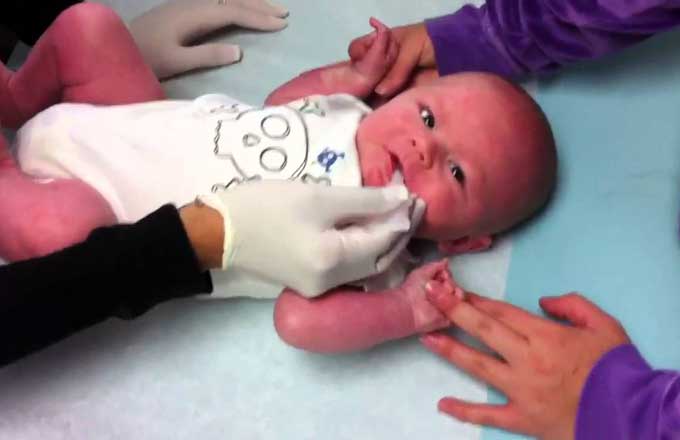
As you already know by now, burps, gassiness, acid reflux, and colic all come hand in hand. Back arching helps stretch the stomach a bit, which, in turn, helps settle the stomach, bring down the acid, and relieve colic pain.
Brief Guide to Soothing a Baby with Colic
Colic is basically fussiness and intense crying sessions. They are common in babies from age six weeks to about four months. They’re usually a result of trouble with feeding, digestion, and burping. We know how overwhelming it can be, so here are some tips to put you on track.
White noise can work magic! It calms the most restless baby by creating a blanket of sound with a similar effect to a mom’s womb. It’ll make your baby sleep faster, and much deeper.
Another technique that never disappoints is a warm shower followed by a massage. You deserve one, too, as a parent. So, make yourself and your baby a brief spa session for a peaceful sleep. Don’t forget to snuggle your baby in a swaddle for extra calmness.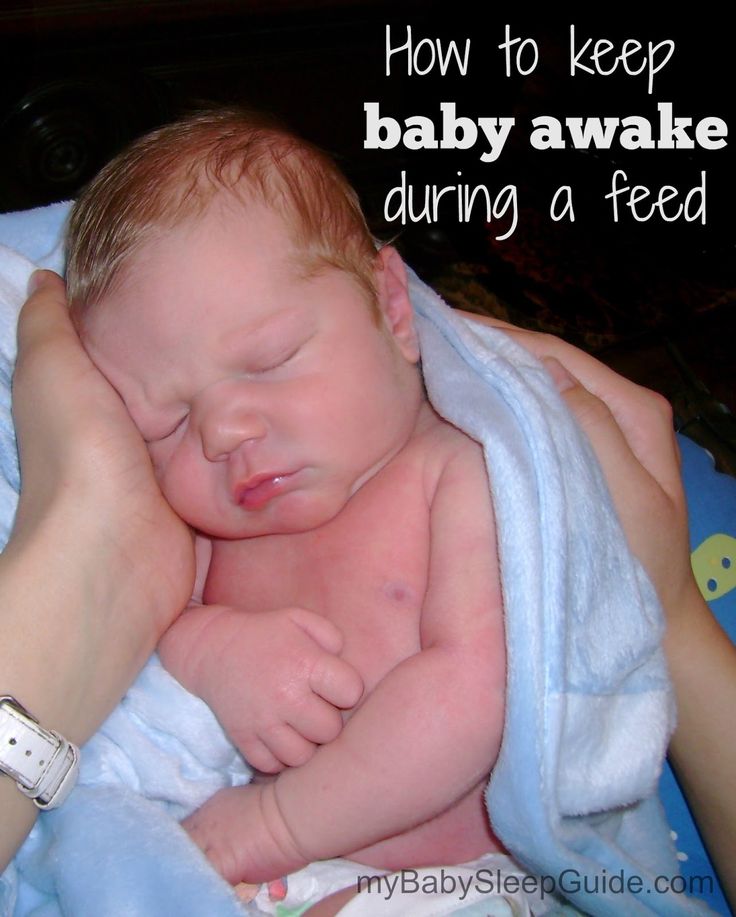
Continuous movement can also do your colic baby good. Carry your baby in a sling and walk around with them, or put them in a rocking seat.
You may want to give changing your diet a shot. Although it’s improbable that it’s the reason for colic, try to cut down on dairy products and caffeine. Then, keep an eye out for improvements.
Your doctor might also prescribe simethicone drops, which help break down gas bubbles in your baby’s stomach, relieving them of the pain. Alternatively, they could prescribe lactose drops that break down lactose for your baby to help with bloating.
When to Stop Burping a Baby?
When you’re fretting about why your baby screams when being burped, it’s always a relief to remember that this won’t last. In the blink of an eye, your tiny bundle of joy will grow out of the manual burping phase.
A baby can learn to burp without your help from the age of four months to nine months. We know the time frame is a bit wide, but it really depends on each baby. Your baby’s cues can indicate when they’re ready.
Your baby’s cues can indicate when they’re ready.
Moving, sitting up on their own, and eating solid food are all signs that your baby will soon laugh at their own burps. Being in control of their body, they can get into comfortable positions to work the air bubbles out of their body.
And eating solid food means their stomach is no longer super sensitive. Once they have better digestion, they’ll get fewer gases.
Baby Screams When Being Burped? FAQs
Now that you know why your baby screams when being burped, let’s address some questions that go throw all of our heads.
Do I still have to burp my baby if they fart?
Yes!
Flatulence is the release of gases at the end of the digestive tract. These gases are a result of the breaking down of the food in the intestine.
Note, however, the gases that are aggravating your baby are those they swallow while feeding, which take up space in their stomach.
Both are important body functions for the comfort and wellness of your baby.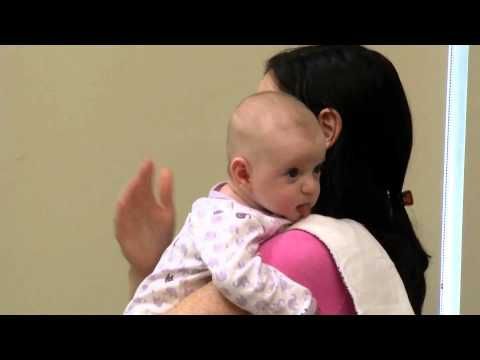
Is a baby burp a sign of fullness?
Burping is not specifically a sign of fullness. In actuality, with the release of air from your baby’s stomach, there’s probably more room for food. So, your baby can burp mid-feed and still go on to have more milk.
That said, a wet burp can generally mean satiation. Hiccups, too, are believed to be a sign of a full stomach.
Wrap Up
Having gas bubbles trapped in your baby’s tummy sure isn’t fun. Colic and acid reflux can make feeding time seem unpleasant.
Once you learn about all the different burping positions and tips you can use, you end up getting the hang of the whole baby burping process.
You get to know how to keep the reflux down and how you can burp your bundle of joy without interrupting nap time. With all the tips mentioned in this post, you may even become the parent who never fails to make them burp!
How to help the baby when regulating
Support icon ofKeywords for searching
Home ›!! How to help a child in sprinkling
Home Home ›!! How to help a child in regurgitation
↑ Verki
Breastal feeding - completely special time for mom and her newborn baby. Together with the feeling of closeness and affection that feeding brings, understanding its nuances cannot but raise many questions, including the question of how to help an infant spit up. Regurgitation in a newborn is by no means always the result of a simple pat on his back.
Together with the feeling of closeness and affection that feeding brings, understanding its nuances cannot but raise many questions, including the question of how to help an infant spit up. Regurgitation in a newborn is by no means always the result of a simple pat on his back.
In this article, we'll talk about the basics of helping a newborn spit up, as well as other questions you may have about spitting up.
Why do babies spit up?
Let's get it straight: why do newborns need to burp in the first place? During feeding, children usually swallow extra air - this is called aerophagia. Spitting up helps prevent this air from entering the intestines, as well as vomiting, gas, and crankiness in the baby. To avoid the return of milk after feeding, you should give the baby the opportunity to burp more often.
How to help a newborn spit up?
During the first six months, the baby should be kept upright in a column for 10-15 minutes after each feed. This will help keep the milk in his stomach, but if the baby occasionally burps anyway, parents need not worry. While carrying your baby in an upright position, you can put a baby diaper or wipes on your shoulder to keep your clothes clean.
This will help keep the milk in his stomach, but if the baby occasionally burps anyway, parents need not worry. While carrying your baby in an upright position, you can put a baby diaper or wipes on your shoulder to keep your clothes clean.
We've already seen why spitting up is important, now let's find out how to help your baby spit up. Parents should gently pat the baby on the back with a hand folded in a handful until he burps. Folding your hand into a handful is important because clapping with a flat palm may be too strong for an infant.
Every baby is different and there is no one right position for spitting up. To get started, you can try the following options:
- Sitting position with the baby on the chest. In this position, the parent puts the baby's head with his chin on his shoulder and with one hand supports the baby under the back. With the other hand, you can gently pat the baby on the back. This method is most effective in a rocking chair or when the baby is gently rocking.

- Holding the child upright on your legs. With one hand, parents can hold the baby by the back and head, supporting his chin and placing his palm on the baby’s chest, with the other hand, you can gently pat him on the back. At the same time, it is important to be careful: do not press the child on the throat, but only gently support his chin.
- Holding a baby on your lap while lying on your tummy. Make sure his head is above his chest and gently pat your baby on the back until he burps.
Here are some tips on how best to help your newborn spit up:
- Let your baby spit up during feeding. If the baby is restless or has swallowed air, it is worth giving him the opportunity to burp during feeding, and not just after.
- When bottle feeding, let the newborn burp after every 50-60 ml.
- When breastfeeding, let the baby burp at every breast change.
It is important to let your baby spit up after eating, even if he spit up during feeding!
If your baby is gassy, spit up more often. Also, if he vomits frequently or suffers from gastroesophageal reflux disease (GERD), have him spit up after every 30 ml bottle-feeding or every five minutes while breastfeeding.
Also, if he vomits frequently or suffers from gastroesophageal reflux disease (GERD), have him spit up after every 30 ml bottle-feeding or every five minutes while breastfeeding.
How long should a baby be held for it to burp? It's different for everyone, but generally keeping a newborn upright for 15 to 20 minutes after a feed helps the milk stay in the baby's stomach.
Minimize the amount of air you swallow. Gas production and regurgitation result from aerophagia during feeding. The baby will inevitably swallow air, but there are ways to prevent it from swallowing too much. Whether you bottle feed your baby or combine breastfeeding with bottle feeding, the Philips Avent anti-colic bottle with AirFree valve is designed so that the nipple is always filled with milk without excess air, even in a horizontal position, thus preventing the baby from swallowing excess air during feeding.
Reducing the amount of air your baby swallows can help reduce your baby's risk of colic, gas, and spitting up.
Breastfeeding is a wonderful time to strengthen the bond between parent and baby. Every mom and every baby is different, so learning to help your newborn burp properly can take time and practice.
Articles and tips from Philips Avent
Baby+ app
Download the app and track your child's development and growth with trackers, and keep those special moments forever.
Download app:
You are leaving the Philips Healthcare (“Philips”) official website. Any links to third party websites that may be included on this site are provided solely as a convenience to you. Philips makes no warranties regarding any third party websites or the information they contain.
I understand
You are about to visit a Philips global content page
Continue
You are about to visit the Philips USA website.
I understand
Why does the baby spit up after breastfeeding?
Every mother has experienced this phenomenon to some extent - this is completely normal, because in the first months the baby's eating habits are just beginning to form.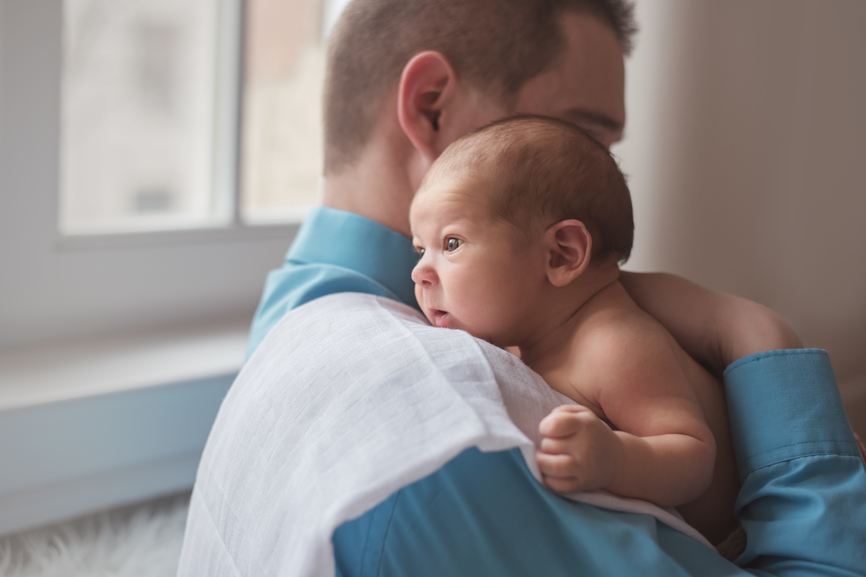 What are the causes of regurgitation? Can this be prevented? What is considered normal, and when should you see a doctor? Let's find out!
What are the causes of regurgitation? Can this be prevented? What is considered normal, and when should you see a doctor? Let's find out!
Dry initial milk formula adapted by Valio Baby 1 NutriValio for feeding children from birth to 6 months More
Follow-up dry milk formula adapted by Valio Baby 2 NutriValio for feeding children from 6 to 12 months More
Dry milk drink "Baby milk" Valio Baby 3 NutriValio for feeding children over 12 months Read more
Root causes
Often the cause of regurgitation depends on the chosen method of feeding: whether the mother is putting the baby to the breast or feeding from a bottle.
When breastfeeding:- Overfeeding the baby.
 If the baby eats too much, then the excess milk comes out naturally.
If the baby eats too much, then the excess milk comes out naturally. - Incorrect breastfeeding technique, as a result of which a large amount of air enters the baby's stomach along with milk. Try to hold the baby so that he completely grasps the nipple and at the same time can breathe freely through his nose.
- Features of the digestive system of children at an early age. In infants up to a year old, the muscles of the esophagus are not yet fully formed, so regurgitation is often a natural process.
- Abrupt change in the position of the child. After feeding, do not turn the baby over, squeeze, swaddle or swing in the stroller.
- Intestinal disorders, such as bloating, colic and other causes that interfere with normal digestion.
- In rare cases, serious diseases of the digestive system.
Note that regurgitation is more often observed not in newborns, but in children aged about 4 months.
Formula-fed:- Abrupt transition from breast milk to formula.
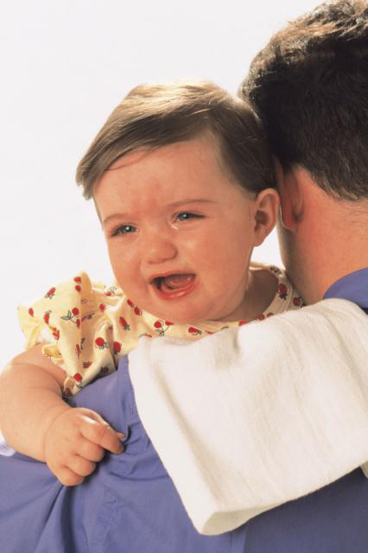
- Unsuitable size and opening of the nipple, due to which the baby takes in a lot of air.
- Tendency to overeat. You should follow the rules of nutrition for babies.
- Inappropriate milk formula. Perhaps the child simply does not tolerate it well, consult a doctor about changing baby food.
Valio Baby's adapted milk formulas are as close as possible in composition to breast milk and contain prebiotics, as well as vitamins and microelements necessary for intestinal health. All components of Valio Baby are natural. A balanced composition allows you to maintain the level of cholesterol in the child's body at an optimal level. Mixtures are designed for three age categories, taking into account the developmental features of babies in a given period:
- from the first days of life to six months;
- for babies from six months to 1 year;
- and for children over 1 year old.
If the baby is lying on his back and starts spitting up, immediately turn him over on his stomach, or pick him up - this will prevent food from entering the respiratory tract.
If your baby seems to be uncomfortable while feeding, or if he comes off the breast and starts crying, let him burp. This can be done in two ways:
- Place a washcloth over your shoulder to avoid getting dirty. Hold the baby on your chest so that his chin rests on your shoulder. Gently stroke or pat your hand on his back.
- Place the cloth on your lap. Turn the baby over on the tummy and position it perpendicular to your body. Support your chin with one hand and pat or rub your back with the other. Please note that the child's head should be higher than other parts of the body so that blood does not rush to it and food does not reflux into the respiratory tract.
As a rule, spitting up 6-8 times a day (in small portions) does not pose a health risk. Over time, when the baby's muscles get stronger, he will better absorb food. Most children stop spitting up after 6-7 months, but in some situations this problem persists up to one year.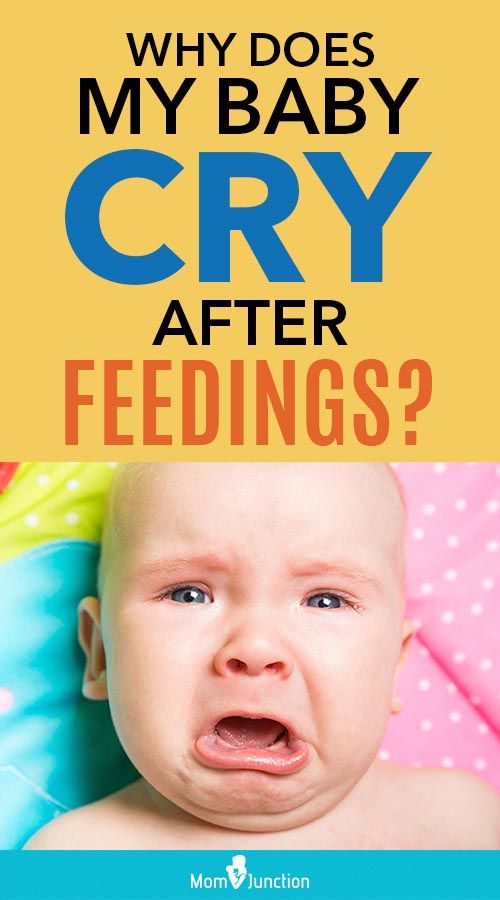
If the spitting up is persistent and strong, prevents weight gain, the child cries after this process, then you should consult a doctor. Such symptoms may indicate that the baby has irritated walls of the esophagus.
Call a doctor immediately if your child is vomiting violently and profusely. This may indicate either the presence of food poisoning, or a disease associated with deformation of the internal organs.
If an infant vomits with greenish bile, this may be a sign of intestinal blockage, which requires urgent hospitalization and possibly even emergency surgery.
Prevention
If your newborn is spitting up a lot after a feed, follow these guidelines:
- Do not feed your baby while squatting or in a car seat as milk or formula may not reach the stomach.
- Create a calm atmosphere. Keep noise and other distractions to a minimum. If the baby is distracted and disturbed by something, there is an increased risk that he will swallow large amounts of air with formula or breast milk.
 For the same reason, do not let the baby be very hungry.
For the same reason, do not let the baby be very hungry. - See that nothing is pressing on the baby's tummy. Make sure his clothes and diaper are not too tight.
- Try to avoid driving immediately after feeding.
- Hold the baby for about 30 minutes. upright after eating.
- When breastfeeding, make sure that the baby is properly latching onto the breast (his lips should cover not only the nipple, but also the areola, as far as possible).
- If you are feeding formula or bottled milk, make sure the opening of the nipple is not too small, as this can prevent the baby from drinking and cause air to be swallowed. The hole should not be too large, so that the child does not choke.
- Do not overfeed your baby. Try feeding him less milk or formula. Watch the reaction. The baby may agree to drink a smaller volume at a time, however, will want to eat more often.
If regurgitation occurs frequently, after each feeding, consult your physician.
4.64 14
Power supplyShare:
Oksana Ivargizova
Medical Institute. Pavlova, specialization - pediatrics
Author: Reetta Tikanmäki
Palm oil in baby food
Infant milk formulas are made from cow's milk. However, in terms of fat composition, it differs significantly from that of the mother.
Read
Author: Oksana Ivargizova
How to choose a milk formula for a baby
Breast milk is the best food for a newborn baby.



